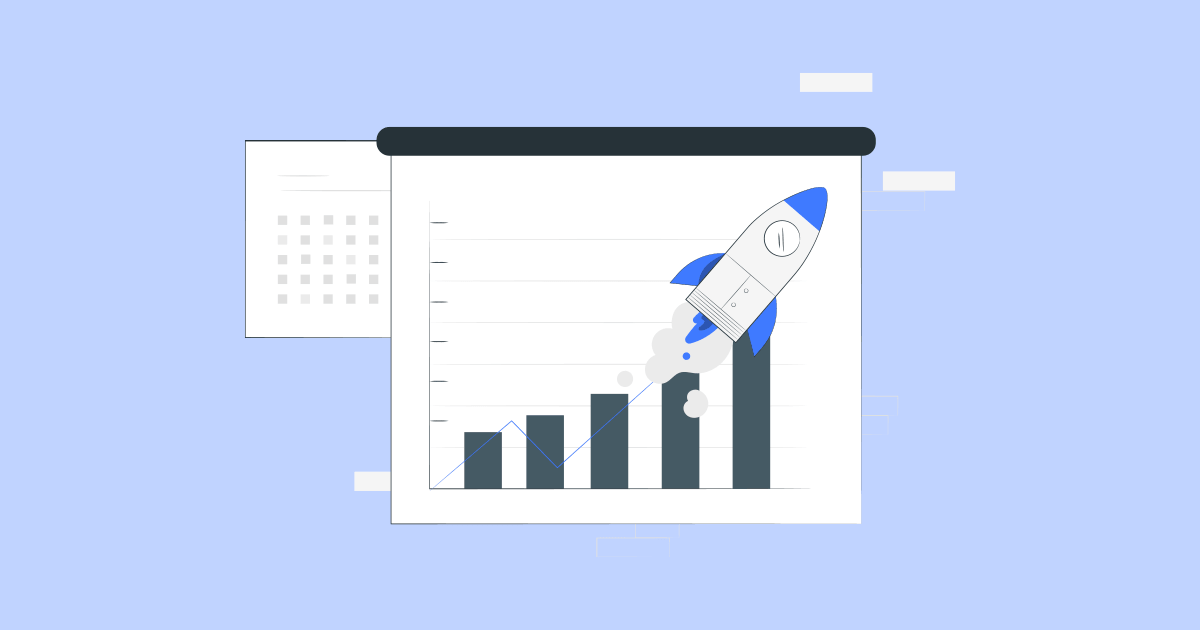Residential Proxies
Allowlisted 200M+ IPs from real ISP. Managed/obtained proxies via dashboard.

Proxies Services
Residential Proxies
Allowlisted 200M+ IPs from real ISP. Managed/obtained proxies via dashboard.
Residential (Socks5) Proxies
Over 200 million real IPs in 190+ locations,
Unlimited Residential Proxies
Unlimited use of IP and Traffic, AI Intelligent Rotating Residential Proxies
Static Residential proxies
Long-lasting dedicated proxy, non-rotating residential proxy
Dedicated Datacenter Proxies
Use stable, fast, and furious 700K+ datacenter IPs worldwide.
Mobile Proxies
Dive into a 10M+ ethically-sourced mobile lP pool with 160+ locations and 700+ ASNs.
Scrapers
Collection of public structured data from all websites
Proxies
Residential Proxies
Allowlisted 200M+ IPs from real ISP. Managed/obtained proxies via dashboard.
Starts from
$0.6/ GB
Residential (Socks5) Proxies
Over 200 million real IPs in 190+ locations,
Starts from
$0.03/ IP
Unlimited Residential Proxies
Unlimited use of IP and Traffic, AI Intelligent Rotating Residential Proxies
Starts from
$1816/ MONTH
Rotating ISP Proxies
ABCProxy's Rotating ISP Proxies guarantee long session time.
Starts from
$0.4/ GB
Static Residential proxies
Long-lasting dedicated proxy, non-rotating residential proxy
Starts from
$4.5/MONTH
Dedicated Datacenter Proxies
Use stable, fast, and furious 700K+ datacenter IPs worldwide.
Starts from
$4.5/MONTH
Mobile Proxies
Allowlisted 200M+ IPs from real ISP. Managed/obtained proxies via dashboard.
Starts from
$1.2/ GB
Scrapers
Web Unblocker
Simulate real user behavior to over-come anti-bot detection
Starts from
$1.2/GB
Serp API
Get real-time search engine data With SERP API
Starts from
$0.3/1K results
Scraping Browser
Scale scraping browsers with built-inunblocking and hosting
Starts from
$2.5/GB
Documentation
All features, parameters, and integration details, backed by code samples in every coding language.
TOOLS
Resources
Addons
ABCProxy Extension for Chrome
Free Chrome proxy manager extension that works with any proxy provider.
ABCProxy Extension for Firefox
Free Firefox proxy manager extension that works with any proxy provider.
Proxy Manager
Manage all proxies using APM interface
Proxy Checker
Free online proxy checker analyzing health, type, and country.
Proxies
AI Developmen
Acquire large-scale multimodal web data for machine learning
Sales & E-commerce
Collect pricing data on every product acrossthe web to get and maintain a competitive advantage
Threat Intelligence
Get real-time data and access multiple geo-locations around the world.
Copyright Infringement Monitoring
Find and gather all the evidence to stop copyright infringements.
Social Media for Marketing
Dominate your industry space on social media with smarter campaigns, anticipate the next big trends
Travel Fare Aggregation
Get real-time data and access multiple geo-locations around the world.
By Use Case
English
繁體中文
Русский
Indonesia
Português
Español
بالعربية

The Ultimate Guide to Crawling YouTube Videos for Search Engine Optimisation Purposes
Synopsis.
In the age of digital marketing, Search Engine Optimisation (SEO) plays a crucial role in increasing traffic and visibility. One effective strategy is to gather data and insights by crawling YouTube videos. This blog post will provide a comprehensive overview of how to crawl YouTube videos for SEO purposes, including the benefits, tools and best practices involved.
Benefits of Crawling YouTube Videos
1. Competitive Analysis: Crawling YouTube videos allows you to analyse the SEO strategies and keywords used by your competitors to gain a competitive advantage.
2. Content Research: Searching YouTube videos can help you identify hot topics, trends, and user preferences within your industry so you can create relevant and engaging content. 3.
3. Keyword Research: Extracting keywords from YouTube videos provides valuable insights into what users are searching for, allowing you to optimise your website and content accordingly.
4. Backlink Opportunities: Crawling YouTube videos identifies potential backlink opportunities by finding videos that link to external websites.
5. Influencer Marketing: Crawling YouTube videos can help you discover and connect with influential creators in your niche for potential collaboration and partnership opportunities.
Tools for searching YouTube videos
1. Python and BeautifulSoup: Python is a widely used programming language for crawling data. With the BeautifulSoup library, you can easily extract information from YouTube videos by analysing the HTML structure.
2. YouTube Data API: The YouTube Data API allows developers to programmatically retrieve video data such as titles, descriptions, views, likes, comments, and more. This automated approach is very effective for larger scale scraping tasks.
3. Selenium Selenium is a popular web scraping tool with browser automation capabilities to browse YouTube search results, collect video information, and process dynamic content.
4. Third-party search tools: Various scraping tools such as Octoparse, ParseHub, or Scrapy simplify the process of YouTube video scraping by providing intuitive interfaces and pre-built workflows.
Best Practices for Searching YouTube Videos
1. Respect the Terms of Service: Ensure that you adhere to YouTube's Terms of Service when crawling videos. Avoid excessive crawling that may violate YouTube guidelines. 2.
2. Use a Proxy Server: To prevent IP blocking or throttling, use a proxy server to rotate your IP address when scraping YouTube videos.
3. Data Cleaning: Clean and filter your searched data, removing duplicate or irrelevant information to ensure accurate analyses.
4. Scheduled scraping: Regularly update your scraping data to stay up-to-date with the latest relevant insights.
5. Stay ethical: When using videos or data scraped from YouTube, be sure to cite the source. Respect copyright laws and ask for permission when necessary.
Conclusion
Crawling YouTube videos can provide valuable data and insights that can greatly improve search engine optimisation. By analysing competitors' strategies, conducting content research and identifying backlinking opportunities, you can optimise your own website and content to increase visibility and traffic. However, it's crucial to adhere to YouTube's Terms of Service, practice ethical scraping behaviour and ensure the accuracy and relevance of your scraping data. With the right tools and best practices, YouTube video search can be an invaluable asset to the SEO toolbox.
Featured Posts
Popular Products
Residential Proxies
Allowlisted 200M+ IPs from real ISP. Managed/obtained proxies via dashboard.
Residential (Socks5) Proxies
Over 200 million real IPs in 190+ locations,
Unlimited Residential Proxies
Use stable, fast, and furious 700K+ datacenter IPs worldwide.
Rotating ISP Proxies
ABCProxy's Rotating ISP Proxies guarantee long session time.
Residential (Socks5) Proxies
Long-lasting dedicated proxy, non-rotating residential proxy
Dedicated Datacenter Proxies
Use stable, fast, and furious 700K+ datacenter IPs worldwide.
Web Unblocker
View content as a real user with the help of ABC proxy's dynamic fingerprinting technology.
Related articles

Seamless Transactions: Buying Proxies with PayPal
Title: "How to Buy Proxies with PayPal: A Comprehensive Guide"In the digital age, proxies have become an essential tool for ensuring online security and privacy. If you're looking to buy proxies with PayPal, you're in luck! PayPal is a trusted and convenient payment method accepted by many proxy providers. To start, you'll need to find a reputable proxy provider that accepts PayPal as a payment method. You can easily do this by conducting a quick search online and reading reviews to ensure the provider is reliable and offers high-quality proxies.Once you've selected a provider, the next step is to choose the type of proxies you need. Whether it's residential proxies, datacenter proxies, or rotating proxies, make sure to select the option that best suits your requirements.After selecting the proxies, proceed to the checkout page and choose PayPal as your payment method. You'll be redirected to the PayPal website, where you can securely log in to your account and complete the payment pro

Using Curl with Proxy: A Comprehensive Guide
Title: Leveraging Curl with Proxy for Efficient Web ScrapingIn the world of web scraping, utilizing proxies is essential for maintaining anonymity, avoiding IP blocks, and accessing geo-restricted content. One powerful tool that can be leveraged for this purpose is the command-line tool Curl.Curl allows users to make HTTP requests from the terminal, and when combined with proxies, it becomes a valuable asset for scraping data from websites. By specifying a proxy server in the Curl command, users can route their requests through different IP addresses, enabling them to scrape data without revealing their real IP address.This method is especially useful for scraping large amounts of data or for accessing websites that have strict anti-scraping measures in place. With Curl and proxies, users can easily rotate IP addresses, evade detection, and ensure the success of their scraping efforts.In conclusion, mastering the use of Curl with proxies can significantly enhance the efficiency and eff

What is Socks5: Everything You Need to Know about Proxy Protocol
Title: Understanding SOCKS5 Proxy: A Comprehensive GuideIntroduction:In today's interconnected world, ensuring secure and private internet connections has become crucial. One way to achieve this is through the use of proxy servers. Among different types of proxies available, SOCKS5 proxy stands out as a highly versatile and reliable option. This blog aims to explain what SOCKS5 is, how it works, and its numerous advantages.1. What is SOCKS5?SOCKS5 (Socket Secure 5) is an internet protocol that acts as a proxy server for network protocols like HTTP, FTP, and SMTP. It provides a flexible framework for routing data packets between a client and a server through a firewall or NAT (Network Address Translation) device, maintaining anonymity and bypassing geographic restrictions.2. How does SOCKS5 work?When a client makes a request through a SOCKS5 proxy, the proxy server establishes a connection on behalf of the client, retrieves the requested data, and sends it back to the client. This proce